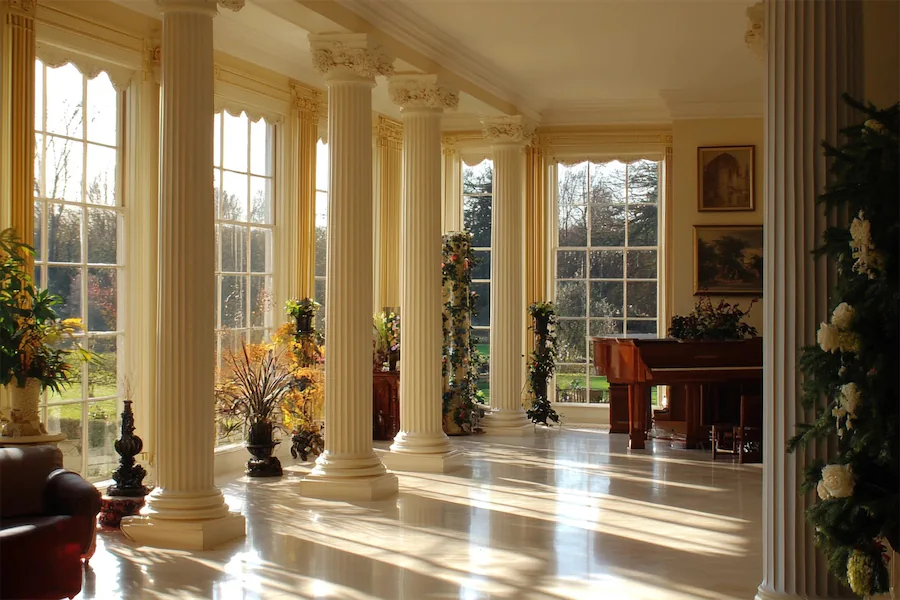Edwardian architecture, prevalent during the reign of King Edward VII (1901–1910), marked a transition from the ornate Victorian era to a more refined and classical aesthetic. This period saw a resurgence of classical elements, with columns playing a significant role in defining the architectural character of the time.
Introduction to Edwardian Columns
In Edwardian architecture, columns were employed to convey elegance and grandeur. They were prominently featured in both residential and public buildings, serving as structural supports and decorative elements that emphasized symmetry and proportion.
History and Origins of Edwardian Columns
The Edwardian era embraced a variety of architectural influences, notably the Baroque revival, often referred to as “Edwardian Baroque” or “Wrenaissance,” due to its inspiration from Sir Christopher Wren’s work. This style drew from 18th-century French architecture and 17th-century English Baroque, incorporating grandiose elements such as columns and pilasters to create imposing facades.
Key Features of Edwardian Columns
Edwardian columns are characterized by:
- Classical Orders: The use of traditional Greek and Roman orders, including Doric, Ionic, and Corinthian, was prevalent. These columns often featured detailed capitals and fluted shafts, reflecting a return to classical simplicity.
- Giant Order Columns: A notable feature in Edwardian Baroque architecture was the “Giant Order,” where columns spanned multiple stories, creating a sense of grandeur and verticality.
- Material Usage: Materials such as stone and brick were commonly used, with columns often painted in light colors to enhance the airy and spacious feel characteristic of Edwardian interiors.
Applications of Edwardian Columns
Examples of Edwardian columns include:
- Public Buildings: Structures like the Belfast City Hall showcase Edwardian Baroque architecture with Corinthian columns, arches, and sculptural pediments, exemplifying the era’s monumental style.
- Residential Architecture: Edwardian homes often featured porches supported by slender columns, contributing to the elegant and welcoming facades typical of the period.
Considerations When Designing Edwardian Columns
When incorporating Edwardian columns into architectural designs, it is essential to consider:
- Proportionality: Ensuring that columns are proportionate to the building’s scale maintains aesthetic harmony and structural balance.
- Ornamentation: While Edwardian architecture favored more restrained decoration compared to the Victorian era, appropriate detailing on columns can enhance visual interest without overwhelming the design.
- Material Selection: Choosing durable materials that can be finely crafted ensures longevity and preserves the architectural integrity of the columns.
Conclusion
Edwardian columns reflect a period of architectural refinement, embracing classical elements to create structures that exude elegance and dignity. Their thoughtful integration into building designs continues to influence architectural practices, embodying a timeless appeal that bridges historical reverence with aesthetic sophistication.
